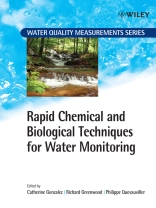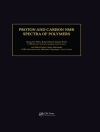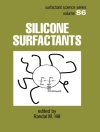Rapid Chemical and Biological Techniques for Water Monitoring presents in one volume the broad spectrum of monitoring tools, both available and under development, and provides an assessment of their potential for underpinning environmental management and legislation. The book explores screening methods in the context of water policies; chemical methods; biological methods; potential use of screening methods; quality assurance and validation methods; integration of screening methods in water monitoring strategies. The text provides a timely source of information for post-graduates, researchers, and professionals involved in water management at all levels.
विषयसूची
Series Preface.
Preface.
The Series Editor – Philippe Quevauviller.
List of Contributors.
PART ONE: SCREENING METHODS IN THE CONTEXT OF WATER POLICIES.
1.1 WFD monitoring and metrological implications (Ph. Quevauviller).
1.2 Use of screening methods in US water regulations (G. Junqua, E. Baur Ss, E. H, lias and O. Thomas).
1.3 Existing an new methods for chemical and ecological status monitoring under the WFD (B. Roig, I. Allan, G. Mills, N. Guigues, R. Greenwood and C. Gonzalez).
PART TWO: CHEMICAL METHODS.
2.1 The potential of passive sampling to support regulatory monitoring of the chemical quality of environmental waters (G.A. Mills, B. Vrana and R. Greenwood).
2.2 Polar organic compounds integrative sample and semi-permeable membrane devices (D. Alvarez and A. Zaliauskiene).
2.3 Main existing methods for chemical monitoring (G. Junqua, C. Gonzalez and E. Touraud).
2.4 UV spectrophotometry: environmental monitoring solutions (D. Constant, C. Gonzalez, E. Touraud, N. Guigues and O. Thomas).
PART THREE: BIOLOGICAL METHODS.
3.1 Application of Microbial Assay for Risk Assessment (MARA) to evaluate toxicity of chemicals and environmental samples (K. Wadhia and K.C. Thompson).
3.2 Bioassays and biosensors (M. Farr, and D. Barcel¢).
3.3 Immunochemical methods (P. M. Kr’mer).
3.4 Biological recognition systems for water monitoring (B. Roig, I. Bazin, S. Bayle, D. Habauzit and J. Chopineau).
3.5 Continuous monitoring of waters by Biological Early Warning Systems (K. Kramer).
3.6 Biological markers of exposure and effect for water pollution monitoring (J. A. Hagger and T. S. Galloway).
PART FOUR: POTENTIAL USE OF SCREENING METHODS AND PERFORMANCE EVALUATION.
4.1 Monitoring heavy metals using passive sampling devices (G. A. Mills, I. Allan, N. Guigues, J. Knutsson, A. Holmberg and R. Greenwood).
4.2 On-site heavy metal monitoring using portable screen-printed sensor (C. Berho, N. Guigues, J. P. Ghestem, C. Crouzet, A. Strugeon, S. Roy and A. M. Fouillac).
4.3 Field monitoring of PAHs in river water by direct fluorimetry on C18 solid sorbent (G. Bernier and M. Lamotte).
4.4 Evaluation of the field performance of emerging water quality monitoring tools (C. Berho N. Guigues, A. Togola, S. Roy, A. M. Fouillac, I. Allan, G. A. Mills, R. Greenwood, B. Roig, C. Valat and N. Ulitzur).
4.5 Sampling uncertainty and environmental variability for trace elements on the Meuse River (A. Strugeon, N. Guigues and A. M. Fouillac).
PART FIVE: QUALITY ASSURANCE AND VALIDATION METHOD.
5.1 Preparation of reference materials for proficiency testing schemes (A. Sahuquillo , M. Ricci, O. Bercaru, H. Emteborg, F. Ulberth, R. Morabito, C. Brunori, Y. Madrid, E. Rosenberg, K. Polyak and H. Muntau).
5.2 Participation of screening methods to proficiency testing schemes on the determination of priority susbstances in real water matrices organised in support of the WFD (C. Brunori, I. Ipolyi and R. Morabito).
5.3 Traceability and interlaboratory studies on yeast-based assays for the determination of oestrogenicity (R. Brix and D. Barcel¢).
PART SIX: INTEGRATION OF SCREENING METHODS IN WATER MONITORING STRATEGIES.
6.1 Assessing the impacts of alternative monitoring methods and tools on costs and decision making – Methodology and experience from case studies (H. Lckge, P. Strosser, N. Graveline, T. Dworak and J. D. Rinaudo).
6.2 Acceptance of screening methods by actors involved in water monitoring (D. Taverne).
Index.
लेखक के बारे में
Professor Dr Catherine Gonzalez, Director of Research Industrial Environment Laboratory (LGEI), Ecole des Mines d’Alès, France
Since 1985, Catherine Gonzalez has focused her research on the development of analytical methods for the identification and quantification of Hazardous Priority Substances in waste. She has 20 years of experience in training courses on analytical chemistry and validation methods for graduate students, and has published international reviews (Analytica Chimica Acta, Water Research, Inter. J. Environ. Anal. Chem, Talanta, Chemosphere). Since January 2004, she has coordinated the SWIFT-WFD project dealing with the development and the validation of screening methods in order to support the WFD implementation.
Dr?Richard Greenwood, Head of Biological Sciences, University of Portsmouth, UK
Research Interests include: Application of mathematical modelling and multivariate analysis to environmental and toxicological data; Environmental toxicology; effects of organic pollutants on marine organisms; Development of passive sampling systems for organic and inorganic pollutants in aquatic environments.
Professor Dr Philippe Quevauviller, Policy Officer, EC Brussels
Philippe Quevauviller has published more than 200 papers and several books linked to environmental quality measurements. He joined the Research General-Directorate of the European Commission in 1989 where he was scientific officer on topics dealing with the quality control of environmental analysis. Since 2002, he has integrated the Water & Marine Unit of the EC Environment Directorate-General where is now responsible for the development of a new Groundwater Directive which will complement the existing water policy framework (in particular the WFD). He is part-time professor at the K.U.Leuven where he teaches ‘water quality and treatment’ in an Interuniversity programme on Water Resources.












